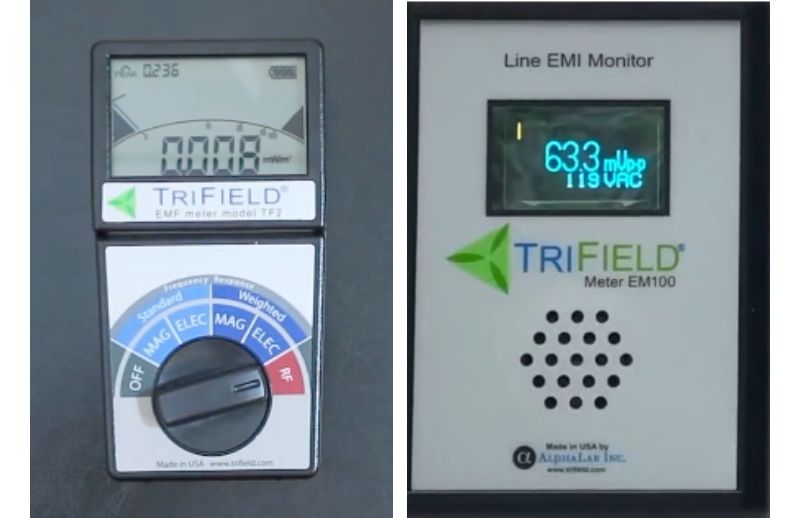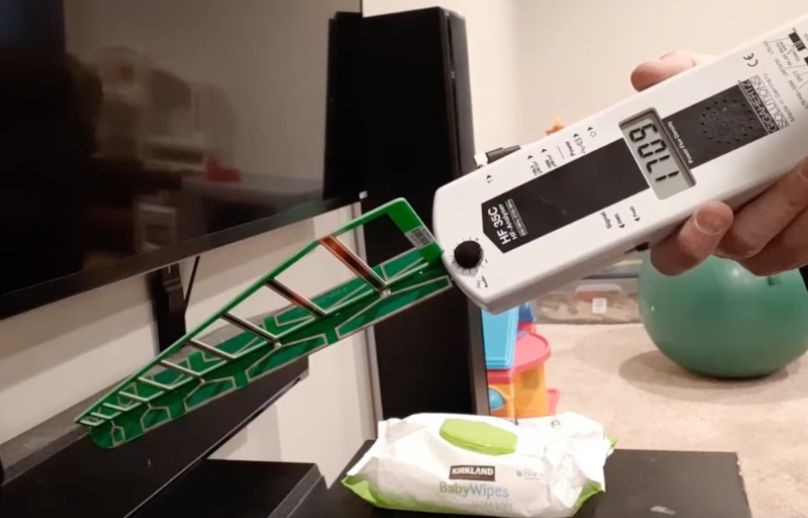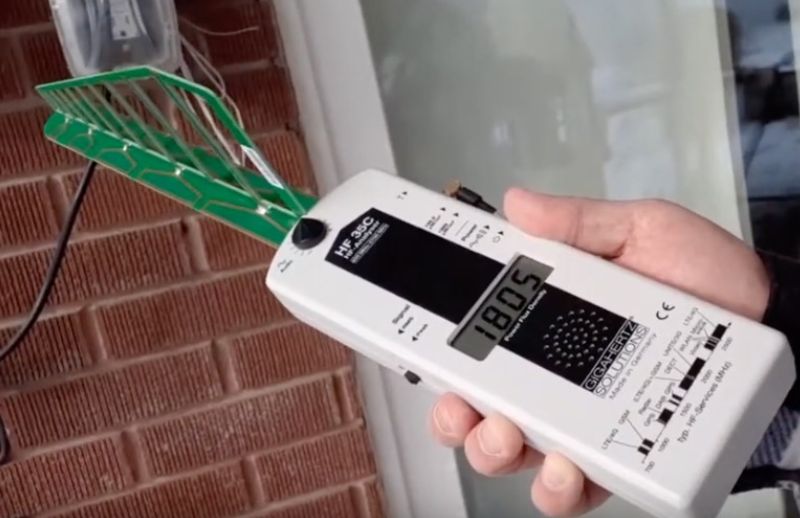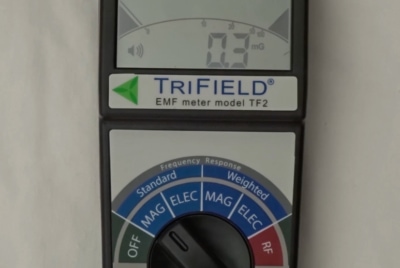Choosing the right EMF meter can be overwhelming – I know because I’ve been there. As someone who’s spent years helping others select and use EMF meters, I’ve seen the common mistakes people make and learned what really matters in the field.
Let me guide you through everything you need to know—from basic features to professional-grade equipment, with real-world examples from my experience.
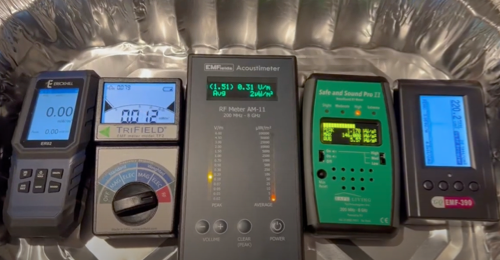
Understanding EMF Meters: The Basics
Every EMF meter serves one primary purpose: measuring electromagnetic fields in your environment. But not all meters are created equal. I learned this the hard way when I bought my first meter – it could only measure magnetic fields, leaving me unable to detect RF radiation from my neighbor’s smart meter. Let me help you avoid similar pitfalls.
What Do You Need to Measure?
Before choosing an EMF meter, it’s essential to identify which types of EMF sources you want to measure, as this will determine the type of meter you need.
Radio Frequencies (RF) Sources
- Cell phones
- WiFi routers
- Smart meters
- 5G towers
- Measurement unit: microwatts per square meter (µW/m²)
- Typical range: 100 MHz – 8 GHz
- Best meters:
- Beginner: Trifield TF2
- Advanced: Cornet ED88T Plus
- Professional: Safe and Sound Pro II
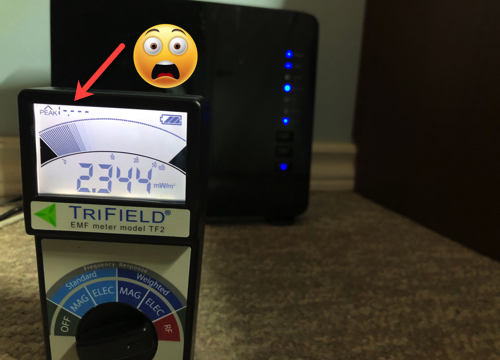
Magnetic Field Sources
- Magnetic fields require current flow (appliance running)
- Electrical Appliances (When Running)
- Circuit breaker panel
- Smart meter
- Electronic Devices
- Measurement unit: milligauss (mG) or microTesla (µT)
- Typical range: 20 Hz – 100 kHz
- Best meters:
- Beginner: Trifield TF2
- Advanced: Cornet ED88T Plus
- Professional: Gigahertz Solutions ME3951A
Electric Field Sources
- Electric fields can exist with just the potential for current (device plugged in, but not on)
- Power lines
- Electrical wiring
- Electrical outlets (even when nothing is plugged in)
- Plugged-in Electronics (Even When Off)
- Appliances (even when turned off)
- Measurement unit: volts per meter (V/m)
- Typical range: 20 Hz – 100 kHz
- Best meters:
- Beginner: Trifield TF2
- Advanced: Cornet ED88T Plus
- Professional: Gigahertz Solutions ME3951A
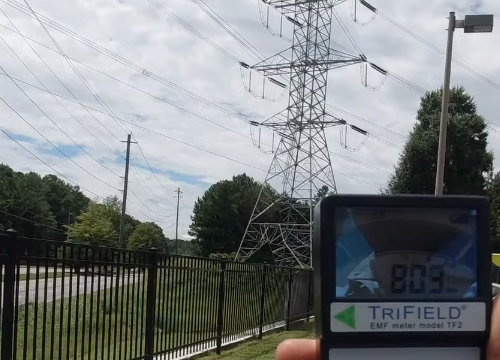
Common Scenarios When You Need All Three:
- Home assessments
- Office environments
- Schools
- New construction evaluation
- Best multi-field meters:
- Beginner: Trifield TF2
- Advanced: Cornet ED88T Plus
Types and Price Ranges
Let’s look at the main categories of EMF meters and what you can expect to get for your money.
Consumer-Grade Meters ($40-$200 USD)
Perfect for homeowners doing occasional measurements. These meters typically offer:
- Basic magnetic field measurements
- Simple electric field detection
- Limited RF capabilities
- Adequate accuracy for home use
- Simple interfaces
- Basic display features
My top pick: Trifield TF2 ($170 USD) – measures magnetic fields, electric fields, and RF. Great balance of features and ease of use for beginners.
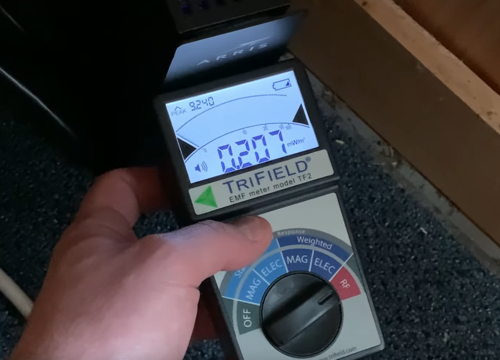
Semi-Professional ($200-$500 USD)
A sweet spot for serious researchers and home inspectors, offering:
- Multi-field detection
- Better accuracy
- Basic data logging
- Wider frequency ranges
- More detailed displays
- Sound/vibration alerts
My top pick: Cornet ED88T Plus ($200-250 USD) – measures magnetic fields, electric fields, and RF with more advanced features, though it has a learning curve.
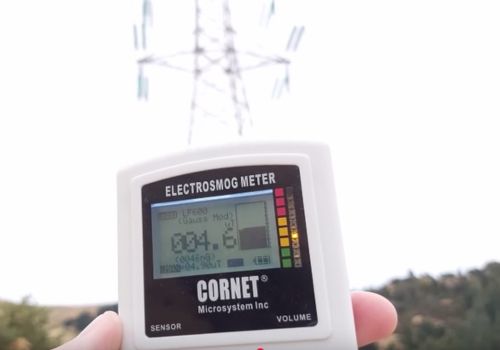
Professional ($500 USD+)
For professional EMF consultants and researchers, providing:
- High precision measurements
- Comprehensive data logging
- Advanced spectrum analysis
- Professional calibration options
- Advanced features for detailed analysis
- Regular firmware updates
My top picks: Gigahertz Solutions ME3951A ($1000+) – high accuracy for magnetic and electric field measurements.
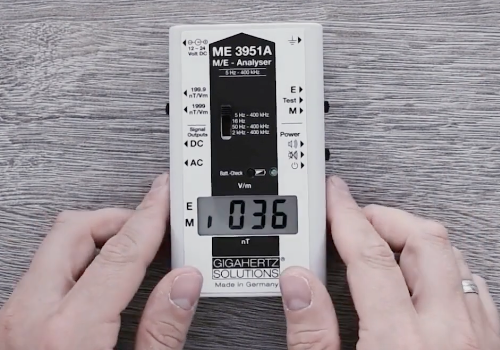
Safe and Sound Pro II ($500 USD+) – specialized RF meter with excellent accuracy and advanced features.
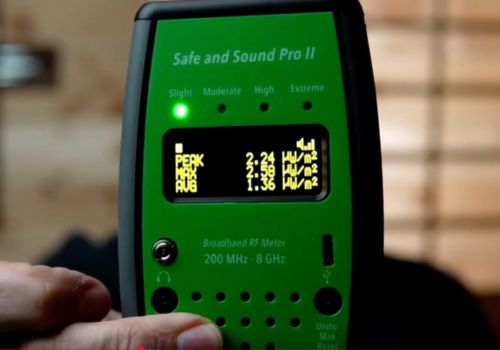
Essential Features
After years of field testing and making my own mistakes, here are the must-have features for any quality EMF meter:
Key Measurement Features
- Data Logging: The ability to record measurements over time – crucial for tracking intermittent sources
- Peak Hold: Captures and displays the highest reading detected – helpful for identifying sporadic EMF spikes
- Spectrum Analysis: Shows the strength of different frequencies being detected – important for identifying specific sources
Frequency Range Coverage
Your meter should cover:
- ELF magnetic fields (20 Hz – 100 kHz)
- Electric fields (20 Hz – 50 kHz)
- RF radiation (100 MHz – 8 GHz for modern devices)
Real-world tip: For 5G detection, you need a meter that can measure up to at least 6 GHz, and ideally up to 8 GHz or higher for some 5G frequencies.
When looking at specs, check that the RF frequency range extends to these levels. For example, the Safe and Sound Pro II can measure up to 8 GHz, making it suitable for 5G detection, while some older or basic meters might only measure up to 3 GHz or less.
I can’t tell you how many people have contacted me who bought meters only to realize they couldn’t detect their local 5G towers.
Measurement Accuracy
Look for:
- ±10% or better accuracy specification
- Regular calibration capabilities
- Clear documentation of testing standards
I once relied on a meter claiming ±20% accuracy, but in real-world testing, it was significantly off compared to calibrated professional equipment. Don’t make the same mistake.
Display and Usability
Essential features include:
- Backlit display for dark environments
- Clear numerical readings
- Sound/vibration alerts for high readings
- Battery life indicator
Trust me on the backlit display – you don’t want to be squinting at tiny numbers when taking measurements in a poorly lit basement!
Applications and Use Cases
Different situations require different types of meters. Here’s how to match the right meter to your specific needs.
Home Assessment
Perfect for consumer-grade meters like the Trifield TF2.
- Identifying high EMF areas
- Measuring smart meter emissions
- Checking bedroom EMF levels
- Evaluating home office setup
In my experience helping homeowners, these are the most common scenarios where a basic meter proves invaluable.
Professional Building Inspection
Requires professional-grade equipment like the Safe and Sound Pro II (RF) and ME3951A (magnetic/electric).
- Pre-purchase property screening
- Office environment evaluation
- School and daycare assessment
- EMF remediation verification
I’ve helped several families check potential homes before buying. Having a meter that can detect multiple types of EMF and store readings for comparison is crucial in these situations.
Research and Investigation
Calls for advanced features found in professional meters.
- Long-term exposure studies
- Source identification
- Interference investigation
- Coverage mapping
New Construction Evaluation
Requires meters that can measure all field types.
- Wiring inspection
- Dirty electricity detection
- Grounding system verification
- Building material assessment
Detailed Product Reviews
Let’s look at the most popular EMF meters in detail, including their strengths, limitations, and real-world performance based on my experience using them.
Trifield TF2 ($170 USD)
Best for: Home users and beginners.
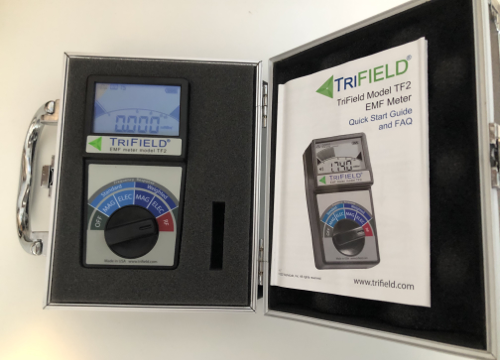
Strengths:
- Intuitive interface
- Good accuracy for the price
- Excellent magnetic field detection
- Clear, backlit display
Limitations:
- Limited RF range
- No data logging
- Can detect some but not all 5G frequencies (RF range up to 6 GHz)
Real-world performance: In my testing, the TF2 excelled at finding wiring issues and measuring magnetic fields from appliances. Its RF detection, while basic, is adequate for identifying major sources of wireless radiation.
Cornet ED88T Plus ($200-250 USD)
Best for: Advanced home users and building biologists.
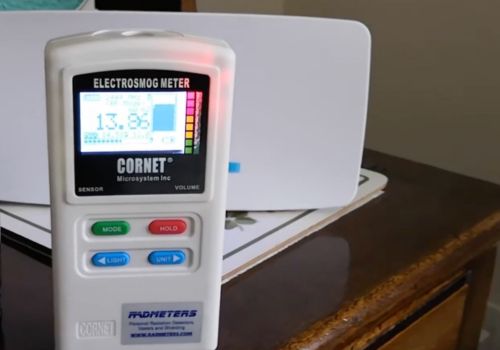
Strengths:
- Comprehensive RF detection
- Sound feature for source location
- Useful histogram function
- Good value for features
- Full 5G detection capabilities (RF range up to 8 GHz)
Limitations:
- Complex interface
- Steep learning curve
- Limited customer support
Real-world performance: The ED88T Plus shines in RF detection scenarios. I’ve used it successfully to track down mysterious wireless interference and map WiFi coverage.
Safe and Sound Pro II ($500+ USD)
Best for: Professional inspectors and EMF consultants looking to measure RF radiation only.

Strengths:
- Professional-grade RF detection
- Excellent data logging
- Advanced spectrum analysis
- Full 5G detection capabilities (RF range up to 8 GHz)
- Regular firmware updates
Limitations:
- High price point
- RF only (no magnetic/electric fields)
- Requires technical knowledge
Real-world performance: This is my go-to meter for professional RF surveys. Its accuracy and advanced features justify the price for serious users.
Gigahertz Solutions ME3951A ($599+ USD)
Best for: Professional EMF consultants.

Strengths:
- High accuracy
- Wide frequency range
- Professional calibration
- Comprehensive capabilities
- Measures magnetic and electric fields
Limitations:
- Very expensive
- Requires training
- Complex operation
- Doesn’t measure radio frequency (RF)
Real-world performance: The ME3951A excels in professional environments where precise measurements of magnetic and electric fields are needed. Its high accuracy and wide frequency range make it particularly valuable for detailed building assessments and EMF remediation work.
Getting Started Guide
Basic Measurement Protocol
Here are the essential steps to follow for accurate EMF measurements:
- Start with a baseline reading in a known low-EMF area
- Move slowly when scanning
- Take readings at various heights
- Document all measurements with photos and notes
- Test at different times of day
Common Sources of Interference
Be aware of these factors that can affect your readings:
- Metal objects
- Body movement
- Other electronic devices
- Fluorescent lighting
- Static electricity
Measurement Documentation
Always document these key details to ensure your readings are meaningful and repeatable:
- Date and time
- Weather conditions
- Device settings
- Distance from source
- Multiple readings for verification
Common Mistakes to Avoid
Based on my years of experience and countless consultations:
- Buying Based on Price Alone
- I started with the cheapest meter available and wasted money
- Better to invest in a quality mid-range meter than replace a cheap one
- Consider future needs when making your choice
- Ignoring Frequency Ranges
- Make sure the meter covers all frequencies you need to measure
- Don’t assume all meters can detect 5G signals
- Check specifications carefully before purchasing
- Skipping the Manual
- Take time to learn your meter’s functions
- Practice in known environments first
- Join online communities to learn from others’ experiences
Making The Final Decision
The best EMF meter is the one that matches your specific needs and technical expertise. Don’t be swayed by the highest price tag or the most features—focus on what you’ll actually use. I’ve seen too many people buy expensive professional meters they couldn’t properly use, or budget meters that couldn’t detect what they needed to measure.
Start with understanding your primary use case, then match it to the appropriate category of meter. Remember that even the most expensive meter won’t help if you don’t know how to use it properly. Take time to learn your meter’s capabilities and limitations.
Consider joining online communities or local groups focused on EMF measurement to share experiences and learn from others. The field of EMF measurement is constantly evolving, and staying connected with other users can help you make the most of your investment.
Remember: Invest time in learning proper measurement protocols, and your results will be more reliable regardless of which meter you choose.

